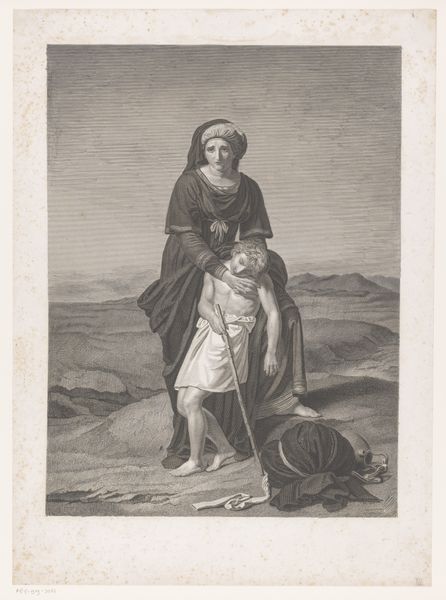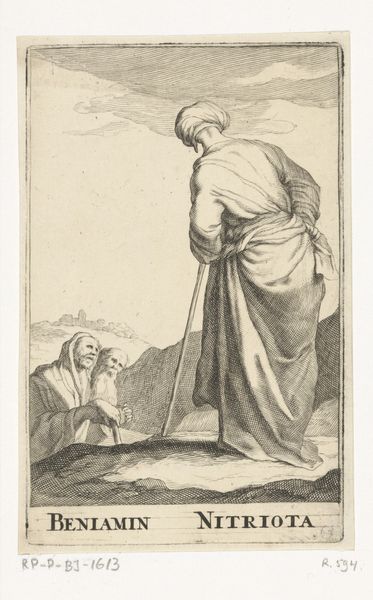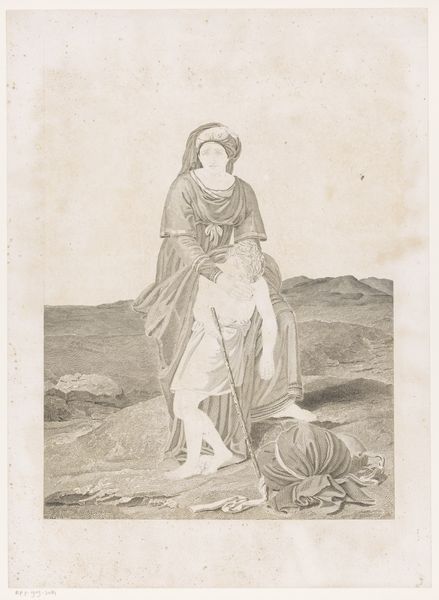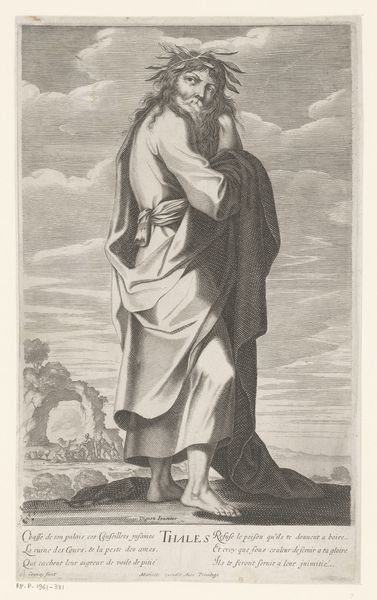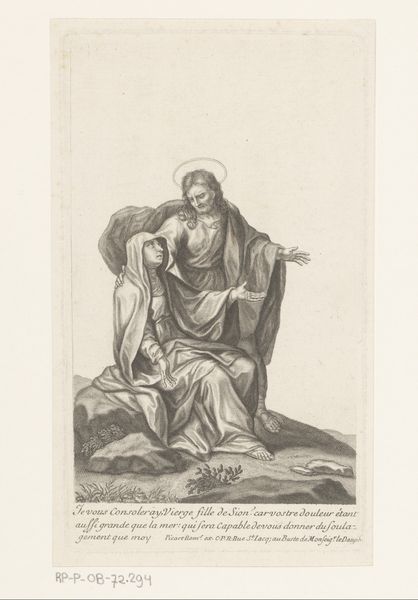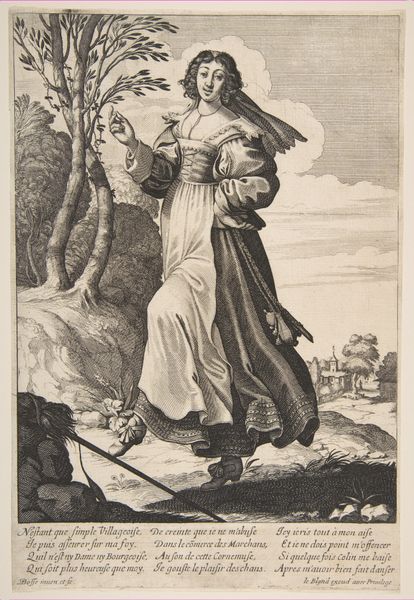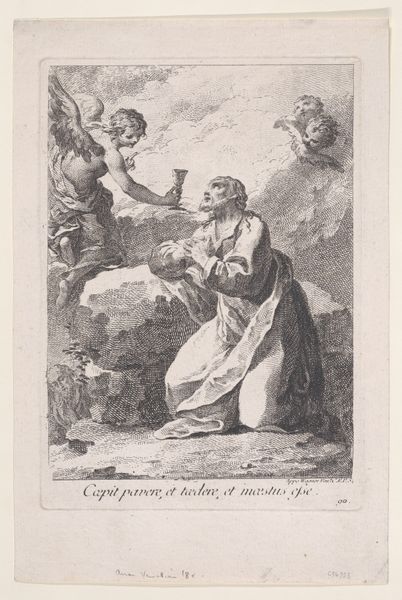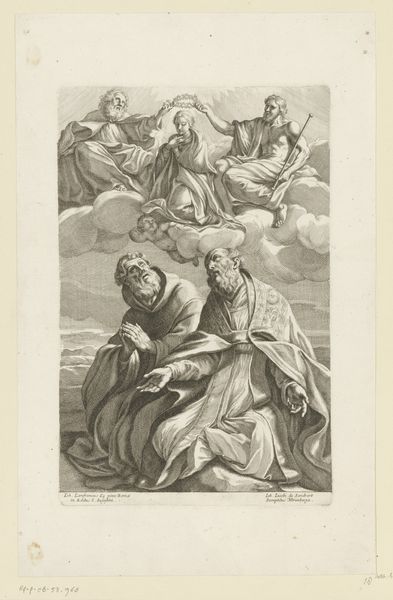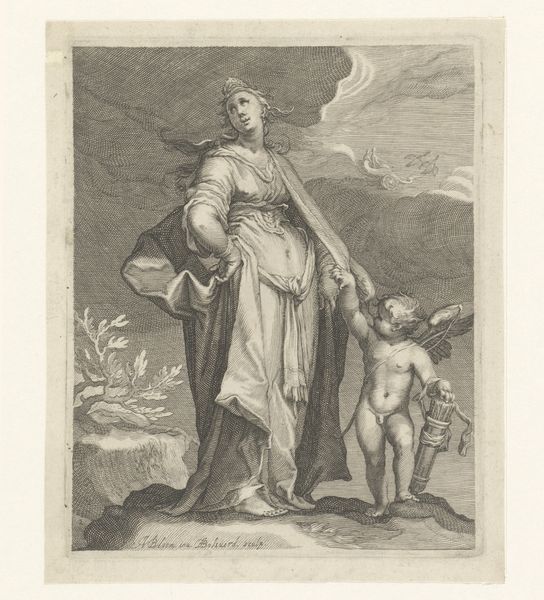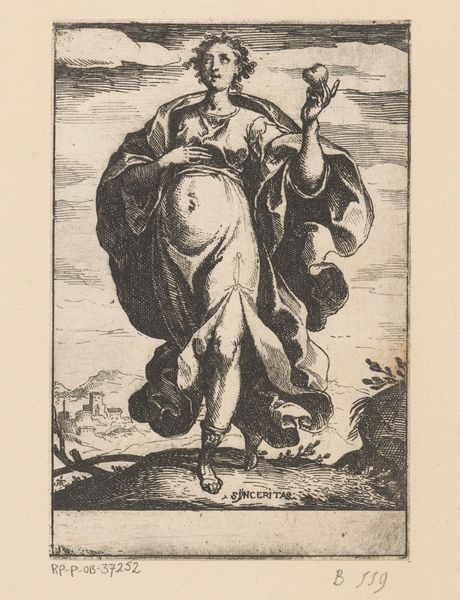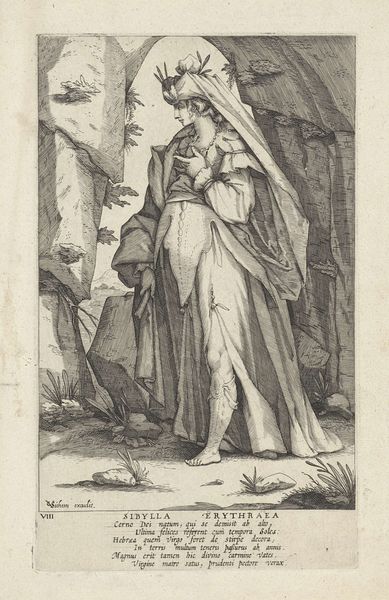
print, engraving
# print
#
landscape
#
figuration
#
romanticism
#
history-painting
#
engraving
#
realism
Dimensions: height 543 mm, width 398 mm
Copyright: Rijks Museum: Open Domain
Erin Corr made this print, "Hagar en Ishmael in de woestijn," sometime in the first half of the 19th century, using an engraving technique. Engraving is an intaglio process, meaning that the image is incised into a plate, often copper, and then filled with ink. The plate is pressed to paper to transfer the image. This method allowed for the relatively easy reproduction of images, catering to a growing market for art among the middle classes, and the desire to make fine art accessible to a broad audience. The fine lines and tonal variations achieved through engraving lend a distinctive visual quality to the print. The image tells a biblical story, its emotional impact heightened by the linear precision of the engraving. Consider the labor involved in creating such a detailed image, and the social context of its production and consumption. This was an era of rapidly expanding industrial capitalism, in which visual media played an increasingly important role. By looking closely at its material and process, we can appreciate how this work participates in broader historical and cultural narratives, challenging traditional notions of artistic value.
Comments
No comments
Be the first to comment and join the conversation on the ultimate creative platform.
